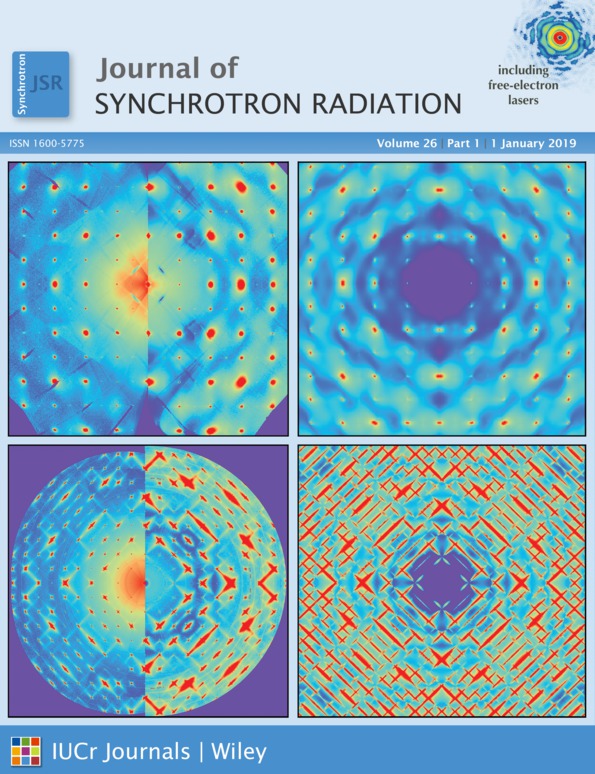Investigation of `glitches' in the energy spectrum induced by single-crystal diamond compound X-ray refractive lenses
Abstract
Single-crystal diamond stands out among all the candidate materials that could be exploited to fabricate compound refractive lenses (CRLs) owing to its extremely stable properties. Among all related experimental features, beam divergence, χ-angles relative to the incoming beam in Eulerian geometry and different positions of the X-ray beam relative to the lens geometry may influence the transmission energy spectrum of CRLs. In addition, the orientation of the single-crystal diamond sample may also affect the glitches significantly. To verify these initial assumptions, two experiments, an energy scan and an ω-scan, were set up by employing a polished diamond plate consisting of five biconcave lenses. The results show that beam divergence does not affect the spectrum, nor do χ-angles when ω is set to zero. Nevertheless, different incident positions have an appreciable effect on the transmission spectrum, in particular the `strengths' of the glitches. This is attributed to absorption. The ω-scan setup is capable of determining the so-called orientation matrix, which may be used to predict both `energy positions' and `strengths' of the glitches.




